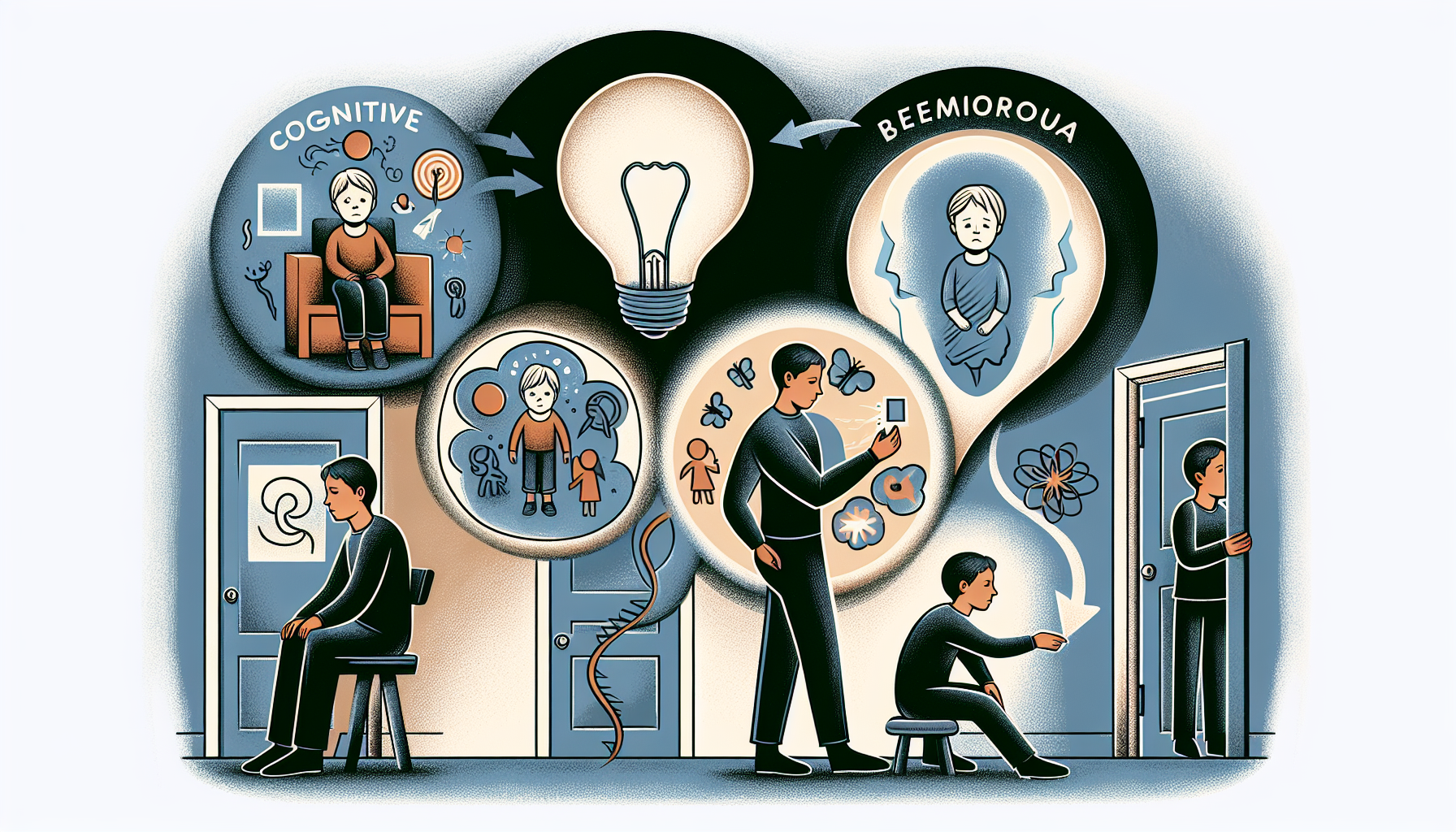Reparenting is a therapeutic technique where you provide yourself with the care and understanding you lacked as a child. It’s a central concept in schema therapy, designed to help you heal past wounds and develop healthier habits. In this article, we’ll delve into reparenting methods, their benefits, and how they help in overcoming deep-seated emotional issues.
Key Takeaways
-
Schema therapy integrates multiple therapeutic modalities to address and transform deeply ingrained maladaptive schemas formed during childhood through techniques such as cognitive, experiential, and behavioral methods.
-
Reparenting in schema therapy involves providing the nurturing and guidance that was missing during one’s formative years, helping individuals heal past emotional wounds and develop healthier emotional and behavioral patterns.
-
Reparenting is particularly effective in treating conditions like Borderline Personality Disorder, Chronic Depression, and PTSD by creating a supportive internal environment and addressing unmet emotional needs from childhood.
Understanding Reparenting in Schema Therapy
Schema therapy is a comprehensive approach that integrates multiple therapeutic modalities, including:
-
Attachment theory
-
Object relations
-
Experiential therapies
By learning from a reputable source like a schema therapy institute, therapists can effectively apply these techniques in their practice.
At its core, schema therapy aims to help individuals meet their basic emotional needs by addressing and transforming their deeply ingrained maladaptive schemas.
Schemas are cognitive frameworks formed during childhood when core emotional needs such as secure attachments, autonomy, and the freedom to express emotions are unmet. These schema domains significantly influence our sense of self, life expectations, and relationships. Schema therapists work with clients to recognize and replace these unhealthy patterns of thinking and behavior.
Reparenting, an integral part of schema therapy, entails self-provision of the missing nurturing and guidance from one’s earlier years. This process helps heal past wounds, leading to improved emotional regulation and personal growth. By transforming maladaptive schemas into healthier coping mechanisms, reparenting helps individuals break free from self-defeating patterns.
Techniques for Effective Reparenting
Through a combination of cognitive, experiential, and behavioral strategies, schema therapy ensures effective reparenting, assisting individuals in substituting unhealthy patterns with more beneficial ones. Specific methods such as limited reparenting, imagery rescripting, and empty chair dialogues are used to address and heal past emotional wounds.
Cognitive Techniques
In schema therapy, a branch of cognitive therapy, cognitive techniques utilize resources such as:
-
Schema flashcards, which contain positive statements to counter harmful beliefs tied to schemas, helping individuals replace negative thoughts with healthier ones. This simple yet powerful tool can be a daily reminder of one’s worth and potential.
-
Organized discussions, which provide a safe space for individuals to explore and challenge their negative thinking patterns.
-
Schema journals, which allow individuals to track their thoughts and emotions related to their schemas, helping them gain insight and develop healthier coping strategies.
These resources are effective in countering the negative aspects of thinking and enhancing self-perception in schema therapy.
Structured conversations provide a supportive framework for challenging existing schemas and developing a balanced perspective. These guided discussions help clients confront and reframe their core beliefs, fostering a more realistic and positive self-view. Additionally, schema diaries allow individuals to monitor and reflect on their thought patterns and behaviors, facilitating greater self-understanding and awareness of schema modes.
Experiential Techniques
In schema therapy, experiential techniques like visual guidance and role enactment aid clients in emotional processing and recontextualizing previous experiences. Guided imagery involves visualizing past experiences and imagining different outcomes or responses, allowing individuals to reframe these events and transform their emotional impact.
Role-playing, another key experiential technique, lets clients act out scenarios that trigger their schemas. This method provides a safe space to explore and process emotions, facilitating emotional healing and insight.
These techniques offer a corrective emotional experience, helping clients move past old wounds and towards a healthier emotional state.
Behavioral Techniques
In schema therapy, behavioral methods concentrate on forming solid boundaries, implementing self-care routines, and strengthening beneficial habits. Establishing healthy boundaries is crucial for creating a safe environment for emotional growth and well-being. This involves learning to say no, setting limits, and protecting one’s emotional space.
Practicing self-care routines is another essential behavioral technique that helps maintain emotional resilience and overall well-being. Simple acts of self-care, such as regular exercise, balanced nutrition, and sufficient rest, contribute significantly to emotional health. Additionally, rewarding adaptive behaviors encourages the development of new, positive habits, reinforcing the progress made in therapy and promoting healthy coping styles.
The Role of the Therapeutic Relationship
A robust therapeutic bond forms the basis for successful schema therapy. This relationship provides a safe space for clients to explore difficult emotions and make meaningful changes. The strength of this bond is crucial, as it helps clients feel understood and supported, which is essential for the therapy’s success.
Empathic confrontation is a key component of the therapeutic relationship in schema therapy. This involves balancing empathy with gentle challenges to help clients recognize and address their maladaptive patterns. By using empathic language, therapists acknowledge clients’ feelings while guiding them towards healthier behaviors.
Building trust and providing consistent emotional support are vital, especially in the initial stages of reparenting. This process can be demanding and time-intensive, but it is essential for creating a foundation of safety and understanding. A strong therapeutic relationship fosters motivation for change and helps clients navigate the challenges of reparenting.
Addressing Early Maladaptive Schemas
Early maladaptive schemas are cognitive patterns formed in response to unmet emotional needs during childhood. These pervasive themes involve memories, emotions, and cognitions that shape one’s self-view and relationships.
In schema therapy, reparenting has a significant part in confronting and healing these schemas, fostering more robust emotional and behavioral patterns.
In schema therapy, a significant part of the work involves confronting and healing early maladaptive schemas—repairing the emotional wounds that drive rigid patterns and fostering more robust emotional and behavioral responses. Dr. Jeffrey Young identified 18 maladaptive schemas. Click here to explore a full breakdown of the relationship schemas we target in therapy.
Emotional Deprivation Schema
The emotional deprivation schema arises from the consistent neglect of emotional needs in childhood, leading to feelings of inadequacy and disconnection. This schema can manifest in three types: Protection (lack of guidance), Empathy (lack of understanding), and Nurturance (lack of support and care).
Individuals with this schema often believe their emotional needs are unimportant or that strong people do not have such needs. Addressing this schema through reparenting involves recognizing and validating these needs, fostering a sense of worth and connection.
Vulnerable Child Mode
The vulnerable child mode represents a state of anxiety, fear, and helplessness stemming from unmet emotional needs during childhood. Individuals in this mode feel overwhelmed and in need of protection. Reparenting aims to nurture this vulnerable state by providing a sense of safety, compassion, and understanding.
Through reparenting, clients learn to soothe their vulnerable child mode, which is particularly beneficial for those with PTSD. This nurturing approach helps heal past emotional wounds and fosters a sense of security and self-worth.
Curious Which Schemas You Struggle With Most?
Take our free Schema Quiz to uncover the core patterns driving your thoughts, behaviors, and relationship struggles. This assessment is adapted from the Young Schema Questionnaire, a widely used tool for identifying early maladaptive schemas. While inspired by Dr. Jeffrey Young’s original work, our version has been modified to reflect our clinical approach and to focus more specifically on how these schemas show up in relationships.
By identifying your dominant schemas, you’ll gain insight into your coping styles and schema modes—and begin taking meaningful steps toward change.
Schema Domains: The Core Drivers of Dysfunction and Disconnection
Schema domains help organize and understand the core patterns that drive suffering and disconnection. These domains include impaired limits, emotional inhibition, and impaired autonomy—each reflecting different ways our unmet needs have shaped our internal world. When these needs go unmet, child modes like the angry child or the overly dependent child can dominate, leading to emotional dysregulation and relational distress. Schema avoidance and coping modes often develop to block out painful emotional experience, but over time they limit self expression and block growth.
Maladaptive parent modes, such as the demanding parent, create a pervasive sense of never being good enough, driving approval seeking recognition and self-criticism. This interferes with the development of a healthy adult and prevents a fully measured and developed self. Schema focused therapy, informed by research from the International Society of Schema Therapy, works to reduce these patterns by strengthening the healthy adult mode and directly addressing unmet needs through reparenting and experiential techniques.
Benefits of Reparenting in Schema Therapy
Schema therapy’s reparenting brings multiple advantages, such as enhanced mental health through fulfilling unmet emotional requirements and resolving initial maladaptive schemas. Individuals often experience lower levels of anxiety, depression, and other emotional distress as a result of this healing process.
One major benefit is the enhancement of healthier relationships by correcting dysfunctional coping mechanisms developed in childhood. Reparenting helps individuals develop a Healthy Adult mode, which nurtures the inner child and moderates dysfunctional coping mechanisms, leading to enhanced self-esteem and self-worth.
Challenges and Limitations of Reparenting
Despite the advantages, schema therapy’s reparenting brings along certain hurdles and constraints. One significant challenge is the resistance to change, as clients may struggle to let go of long-held negative patterns. This resistance can make the process slow and demanding for both the therapist and the client.
Another limitation is the long-term commitment required for reparenting to be effective. Schema therapy is a longer-term form of therapy that demands consistent effort and dedication. Additionally, deeply ingrained maladaptive schemas can be difficult to restructure, requiring persistent and focused therapeutic interventions.
Reparenting for Specific Conditions
Reparenting proves to be remarkably efficient in treating personality disorders like Borderline Personality Disorder (BPD), Chronic Depression, insecure attachment, relational trauma and Post Traumatic Stress Disorder (PTSD). Each of these conditions benefits from the nurturing and corrective emotional experiences that reparenting provides.
Borderline Personality Disorder
Reparenting in schema therapy has shown significant improvements in treating Borderline Personality Disorder (BPD). Studies have found schema therapy more effective than other therapies in helping patients understand and manage their conditions. The focus on reparenting has resulted in higher full recovery rates compared to transference-focused psychotherapy.
Schema therapy’s emphasis on addressing emotional voids and creating a nurturing internal environment helps reduce self-harming behaviors in BPD patients. This approach provides the stable, nurturing environment that individuals with BPD often lacked during their early development.
Chronic Depression
For Chronic Depression, reparenting focuses on building self-compassion and emotional resilience. This approach helps patients counteract deep-seated feelings of worthlessness and despair. Reparenting techniques, such as the therapist acting as a comforting presence, provide a voice of reassurance and positivity to replace the patient’s negative self-talk.
By nurturing the inner child, reparenting helps improve emotional states and reduces self-criticism in patients with chronic depression and other mental health disorders. This leads to a significant improvement in their overall mental health and well-being.
Post Traumatic Stress Disorder
Reparenting in schema therapy is also beneficial for individuals with Post Traumatic Stress Disorder (PTSD). By creating a supportive internal environment, reparenting helps mitigate trauma-related emotional responses. This supportive approach aids in the processing and integration of traumatic memories, promoting emotional healing.
Addressing childhood trauma and unmet needs through reparenting significantly decreases the likelihood of relapse in various mental health conditions, including PTSD. This nurturing process helps individuals develop healthier emotional processing techniques and coping strategies. If you are wondering how childhood trauma is impacting you, take our childhood trauma test to understand the impact.
Insecure Attachment
Schema focused therapy can be particularly effective for individuals struggling with insecure attachment. The schema therapy model integrates cognitive therapy and emotion focused techniques to target maladaptive schemas and unhealthy schema-driven patterns that often emerge in close relationships. Through understanding your early maladaptive schema and identifying your coping styles and maladaptive coping modes, schema focused therapy helps you shift out of protective strategies and into healthier connection.
Working with schema modes allows you to heal attachment wounds by addressing the emotional parts of yourself that carry childhood wounds and painful memories. The schema therapy model provides a structured approach for reparenting these modes and creating new relational experiences.
Finding a Qualified Schema Therapist At Bay Area CBT Center
If you’re looking for a qualified schema therapist in San Francisco Bay Area, the Bay Area CBT Center offers evidence-based treatments including schema therapy. We provide schema therapy in San Francisco, schema therapy in Oakland, and schema therapy in Los Angeles. Our therapists are trained in schema therapy and specialize in helping you break lifelong patterns and build healthier relationships.
If you’re curious about what schemas you have in relationships, take our Schema Questionnaire. If you’re wondering whether schema therapy is the right approach for you, try our What Type of Therapy Do I Need Quiz.
Summary
Reparenting in schema therapy is a transformative approach that addresses unmet emotional needs and heals early maladaptive schemas. By employing cognitive, experiential, and behavioral techniques, this therapy helps individuals develop healthier coping mechanisms and improve their overall mental health. The strong therapeutic relationship is fundamental in facilitating these changes, providing a safe and supportive environment for clients.
In conclusion, reparenting offers a path to emotional regulation and personal growth, helping individuals break free from negative patterns and build a healthier, more fulfilling life. Whether dealing with Borderline Personality Disorder, Chronic Depression, or PTSD, reparenting provides the nurturing and guidance necessary for profound healing and transformation.
























































